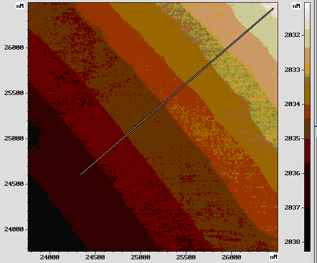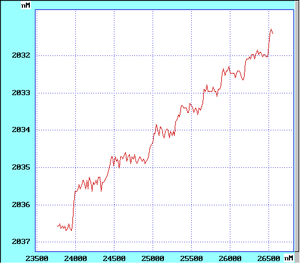Measuring in vacuum and controlled atmosphere
Application Note 071 (pdf 570 Kb)
The Q-factor of the cantilever in vacuum increases, thus gaining the sensitivity, reliability and accuracy of “probe-sample” light forces measurements. At that, the change from atmosphere pressure to 10-2 Torr vacuum provides the tenfold gain of Q-factor. By further vacuum pumping, Q-factor reaches its plateau and changes insignificantly. The sensitivity gain is especially important for the light forces measuring, for example extremely sensitive magnetic measuring, Kelvin Probe Microscopy and Scanning Capacitive Microscopy.
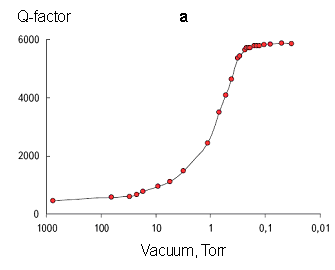
Q-factor reaches its plateau at the value of 10-1 Torr. Higher vacuum does not change Q-factor substantially
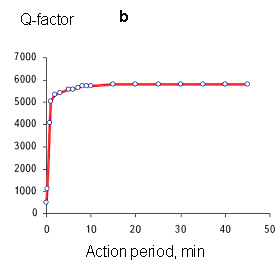
Vacuum providing tenfold increase of Q-factor is reached in 1 minute after the operating starts
High and ultra high vacuum systems provide the proper purity of processes. Owing to the high vacuum (up to 10-6 Torr) conditions, there is no water on the sample’s surface and in the probe-sample environment so there are no capillary forces between the probe and the sample, thus raises the force measurement accuracy that is useful for e.g. real adhesive effects study. Moreover, owing to the high vacuum one can carry out investigations in very low temperatures without “hoarfrost” on the samples’ surface. The thermal variations device “Cold finger” in SOLVER HV-MFM provides cooling down to 110 К (using liquid N2) and heating up to 420 К.
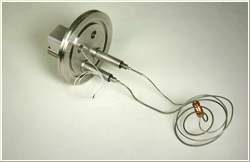
Q-factor reaches its plateau at the value of 10-1 Torr. Higher vacuum does not change Q-factor substantially
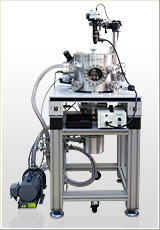
Vacuum providing tenfold increase of Q-factor is reached in 1 minute after the operating starts
TOPOGRAPHY AND PHASE IMAGES OF DNA
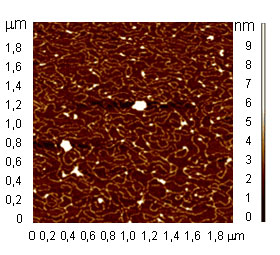
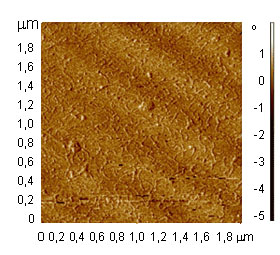
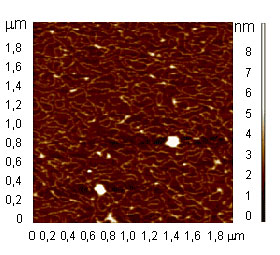
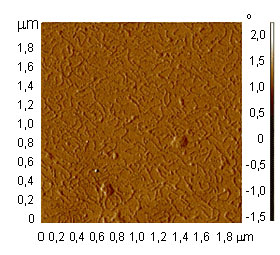
MFM IMAGES OF LOW-DENSITY HDD
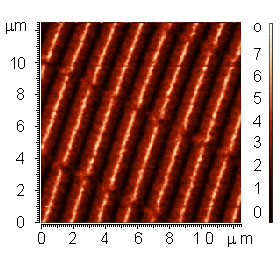
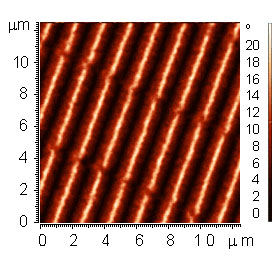
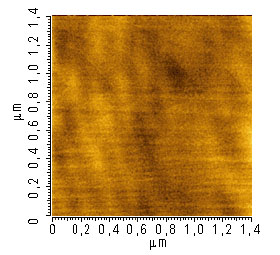
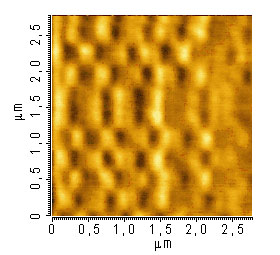
MFM IMAGES OF HDD OF HIGH DENSITY
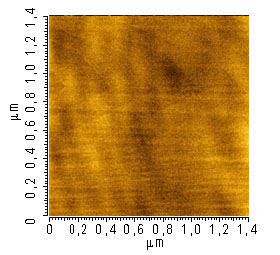
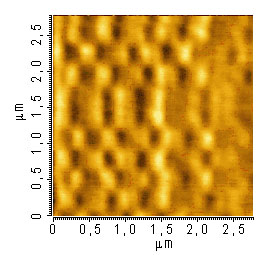
KELVIN PROBE FORCE MICROSCOPY IMAGING MODE IN VACUUM (5x10-7 Torr) AT 113 K
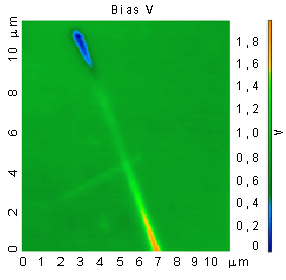
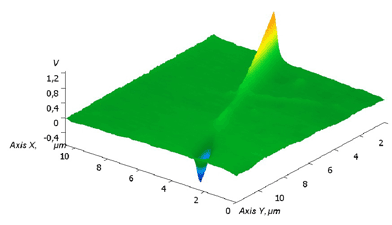
SCANNING CAPACITANCE FORCE MICROSCOPY IN VACUUM (5x10-7 Torr) AT 113 K.
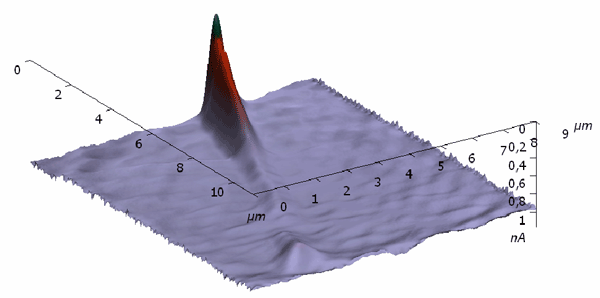
Surface of unalloyed GaAs pre-charged by the lithography treatment
